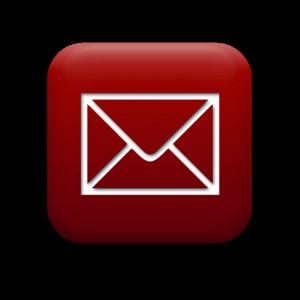|
Looking for a special way to show your mother you care this Mother’s Day? This year, go beyond simply signing a card and write your mother a real letter. Most of us have fallen out of the habit of writing letters, but a thoughtful letter from you will mean more to her than any store-bought card or gift ever could.
The first thing to remember is that you’re not writing a greeting card—you’re writing a letter in your own personal voice, expressing your own personal thoughts. There’s nothing your mom loves more than you, and she wants to hear your voice, not an imitation of someone else’s. Be yourself, and write about real things that matter to you. But what exactly do you say? Start by exploring some memories you have of your mother. What little—or big—things did she do that have stayed in your memory? Do you have happy memories of spending time with her? What did she teach you that you especially value now? What activities did you enjoy together? These don’t have to be life-changing events. Everyday things like learning to cook or garden can mean a lot. Was there a time she comforted you when you were upset? A piece of advice that has turned out to be important? A time she made a sacrifice for you? Your most cherished memories might be things your mother doesn’t even know you remember. Sharing those with her will mean the world to her. If you let your mother know the difference she has made in your life, your letter can be something that she will treasure forever. These dos and don’ts can help: Do
Don't
Don’t be shy about writing your mother a real, personal letter this Mother’s Day. Your mom loves everything you do. If she loved that macaroni and glitter collage you made, just imagine how much she’s going to love this letter. She might not tape it to the refrigerator, but you can be sure she’ll cherish it forever.
3 Comments
by Laura Brown
Originally Published Dec 11, 2014 The holiday family newsletter has become a tradition that, like many traditions, is both loved and despised. It’s nice to hear what your friends have been doing over the past year, but these newsletters can easily become yet another holiday-season irritant. There are two main pitfalls in creating a holiday family newsletter: boring and boastful. Most of our lives are pretty routine most of the time, and a faithful recounting of the previous year might be a little tiresome for friends to read. On the other hand, focusing on your family’s achievements can create the impression that you’re bragging about them. Writing an engaging newsletter that your friends will enjoy reading requires a little art and attention. These dos and don’ts can help: Do
Don’t
If your holiday family newsletter is done right, reading it can be like a little visit with your family, and it will bring a smile to the faces of your friends and family. Happy Holidays, everyone! Looking for a holiday gift for anyone who has to write anything? How to Write Anything is on sale at Amazon! by Laura Brown
Originally Published Oct 27, 2014 One of the most frequent questions I receive is how to get through everyday writing faster. We’re all pressed for time these days, and we’re all writing more than ever before. I’ve blogged about this topic before, and when leadership consultant Skip Prichard asked me to contribute a post to his blog, I thought I’d share more tips to help people accelerate their writing at work. This post is an adaptation of the article I wrote for Skip. According to a 2012 study from the McKinsey Global Institute, we now spend an average of 28% of our time at work reading and writing e-mails. That’s a total of 81 days a year spent on e-mail alone. Another study, from the Radicati Group, found that the average corporate worker processes an average of 105 e-mails every day. Any way you look at it, that’s an extraordinary investment of time and brainpower, and these numbers cover only e-mail, not the other kinds of writing we do at work. What would it be like to get some of that time and energy back to devote to other projects, or just to take a deep breath once in a while? Writing is likely to remain an important part of the average workday, but there are ways to streamline your writing process so that you can get through your writing tasks in less time. These tips can help. Discover Your Process In my consulting practice, I find many people think they’re doing writing “wrong.” They have some notion from a high school or college writing class—or from business writing training at some point—that there is a “correct” way to approach a writing task, and they’re sure they’re doing it wrong. The fact is that there are many different successful ways to get your writing done. One of the keys to success in writing, and to accelerating your writing process, is to discover the process that works best for you. Writing is typically taught as a linear process: first you consider your purpose and your reader, then you brainstorm content, then you create an outline, then you write a draft, and finally you revise that draft. There’s nothing wrong with that process, unless it doesn’t work for you. Many people find that a less linear approach feels more natural. You can start to discover your own best process by simply observing how you typically start a writing project. Do you like to have an outline before you start? Do you jump right in and write a draft? Do you consider your objectives before you start to write? These are all potentially excellent ways to get started on a writing task. Once you understand the writing process that works best for you, run with it. Stop beating yourself up about doing it “wrong,” and find ways to work with your own approach. Becoming more conscious of your writing habits and embracing your own preferred style will accelerate your writing, no matter the task at hand. To Speed Up, Slow Down One of the best ways to speed up your writing is often to slow down a little. Taking a minute to think before you write can save you a lot of time over the long run. This trick can be especially useful with e-mail. Before you compose an e-mail, ask yourself these two questions: “what am I trying to achieve with this message?” and “who is my reader and what do they expect from me?” This simple, time-saving matrix will force you to isolate and refine your message before you even start writing it. Your e-mail will be more concise, and you’ll be less likely to omit important content (and less likely to have to follow up because of it). You can use the same kind of matrix when you read and reply to e-mails: ask yourself “what is the purpose of this message?” and “what is my reader asking of me?” Slowing down just long enough to ask and answer these questions will speed up your e-mail processing overall. Do You Really Need to Send That E-mail? Your first line of defense in the war against the e-mail time suck is to consider whether you need to send an e-mail at all. We’ve all been involved in long e-mail threads hashing out issues that could be more easily resolved by a conversation. Before you send an e-mail, ask yourself if the matter could be addressed more quickly through a phone call or a face-to-face chat. If the answer is yes, don’t send that e-mail. Unless there’s a clear reason the communication must be in writing, try handling the issue through a quick conversation. Many people dread writing, and writing at work can easily devolve into a time-consuming and demoralizing burden. Taking a few easy steps to master your writing process and address e-mails more systematically can speed up your writing time and make writing for work more enjoyable. by Laura Brown
Originally Published Sep 9, 2014 Book reviewing used to be the purview of the elite. Now, thanks to the Internet, everyone’s a critic. Your online book reviews can make a real difference: people almost always scan the reviews of a book before they make a purchase decision, and your insights can be a big help. We’re all familiar with the rant review–the one that either adores or despises the book. Writing a balanced review is more difficult, but it’s also more helpful to your fellow readers. As you brainstorm, think from your readers’ point of view. What information would be most useful to them? What do you wish you had known about this book before you read it? These dos and don’ts can help. Do:
Don’t:
In this new, more democratized world of book reviewing, you have a big responsibility–both to authors and to your fellow readers. Book reviewing online can be loads of fun, and if you provide really useful insights, you might even develop a following as a reviewer! This article was originally published on Huffington Post. by Laura Brown
Originally Published Jul 14, 2014 Facebook can be engaging and enjoyable, or it can be a source of aggravation and stress. If you put some care into writing your status updates on Facebook, you’ll have more fun there, and you’ll also give your friends and followers a better experience. Facebook status updates are often conversational, but remember: they are a type of writing, and you have an audience of readers. Every time you post an update, you’re creating a reading experience for your friends. Think of yourself as the editor of your own personal magazine, and post with your readers’ engagement in mind. These dos and don’ts can help: Do
Don’t
Everyone has opinions about the best way to use Facebook. You can’t please all the people all the time, but you can use some care in writing your status updates to make them as pleasant as possible for your friends and followers. This article was originally published on Huffington Post. by Laura Brown
Originally Published Jun 9, 2014 This spring 1.6 million students will graduate from US college and universities.[1] The good news is that the National Association of Colleges and Employers predicts that employers plan to hire 7.8% more new graduates this year than they did in 2013. The less good news is that this year’s grads still face stiff competition in the job search: desirable jobs can attract hundreds, and sometimes thousands, of applications. In the face of such competition, the pressure is on make your application stand out from the crowd. Taking some care with your writing as you pursue that elusive job can give you a leg up on the competition. These tips will help you write your way to your first job. Customize Your Résumé and Cover Letter for Each Application Even if you’re applying for dozens of jobs, you should take the time to customize your résumé and cover letter for each job application. It can be a lot of work, but the effort will pay off in more interviews. Many career coaches will tell you that simply blasting out generic résumés with boilerplate cover letters to dozens of employers is a waste of time and energy. When you apply for a job, you’re doing much more than just presenting your credentials: you’re helping the hiring manager understand why you’re a good candidate for this job. Your résumé should be crafted to highlight the experience you’ve had—jobs, internships, coursework—that most closely matches the requirements of the job. Your cover letter should be brief and should explicitly state why you’re a good fit for the job and point the reader to the relevant sections of the résumé The screening process for job candidates is conducted very quickly and can be ruthless. Your objective should be to pique the reader’s interest and motivate them to bring you in for an interview—not give them an excuse to reject your application out of hand. Use Keywords in your Résumé Keywords are the name of the game in online job advertisements—and in successful applications for those jobs. Employers use keywords in their job descriptions to make the job postings more easily searchable. You, in turn, should use keywords drawn from the job description in your résumé. Many large companies use scanning software to screen résumés, and if your résumé doesn’t show the keywords from the job description, it won’t get past the initial screen to be viewed by a human being. Using keywords effectively can be more challenging if you don’t have a lot of job experience on your résumé. Don’t ever falsify the information on your résumé in the interest of incorporating keywords (or for any other reason). If you can’t honestly mention a keyword in the education or experience section of your résumé, you can mention it in your objective section, especially if it’s a job title or function you’re particularly interested in. Proofread! All the customizing and tailoring you’re doing on your résumé and cover letters introduces the risk of typos and other errors. Carefully proofread your résumé and cover letter before you send them out or upload them. Be particularly careful with punctuation and formatting on your résumé if you’ve made changes to it. If you’re customizing cover letters from a template, check and re-check that each letter has the name of the correct company and recipient. It’s a good idea to ask someone to proofread your résumé and cover letter before you send them out—looking at the same documents over and over can make you cross-eyed and make it very hard to detect errors. Hiring managers who have hundreds of résumés to wade through are looking for a reason to weed some out. Sending a cover letter that includes typos or other errors broadcasts that you don’t care, and no one wants to interview someone who doesn’t care. Don’t lose the opportunity for an interview through carelessness. For more information about writing for the job search, check out How to Write Anything: A Complete Guide. You’ll find sections devoted to résumés, cover letters, internship letters, and more. Next week we’ll talk about what to do once you’ve got your new job, and I’ll be sharing some tips to help smooth your transition from writing at school to writing at work. [1] Source: National Association of College and Employers (www.naceweb.org) by Laura Brown
Originally Published Apr 28, 2014 This week we’re thrilled to feature a post from guest blogger Jessica Sick, marketing manager for Crane & Co. Crane has been the maker of the finest quality stationery for more than 200 years. How to Write Anything: A Complete Guide features a sidebar by Crane on at-home cards, as well as images of some of their beautiful products. As an authority on correspondence etiquette (we’ve literally been writing the book on it since the late 1800s), Crane receives emails daily from brides, professionals and anyone else needing advice on stationery and what should be written on said stationery. So, a couple years ago I decided to create the Crane Concierge, a trusted, quick-to-respond contact with (hopefully) all the answers. Below are just a handful of some of our frequently asked questions, everything from nicknames to politely relaying a “no children” wedding policy. Enjoy, and please feel free to email [email protected] with your own! Q: I am a banker that deals mostly in a retail setting. I have been using handwritten notes recently to add more of a personal touch to deepen relationships with my clients. What are some suggestions that you have for different types of stationery that I should have at all times, and should I have the same style on each type of stationery? A: A hand-written note adds such a personal touch, and one that is much appreciated by the recipient. The one item I always recommend is the correspondence card, a flat card that usually provides enough room for a brief but thorough note. Though traditionally one would have separate business and personal stationery, I believe there is a way to successfully have one for both purposes. Start with a classic paper color (as opposed to a bright color) such as white or ecru and a printed name as opposed to a monogram. A printed name avoids confusion for more unfamiliar recipients. Allow personal style come through in ink color and typestyle choices, though avoid typestyle options that are too playful. Comic Sans should be reserved for children’s stationery. Adding your email address to the bottom of the stationery is a good way to include contact information without it feeling too corporate. Q: My son, who is in eighth grade, is applying to schools. Resultantly, he will need stationery to thank people. I would like something classic (in ecru with blue lettering) and I believe that he should have single cards (versus note paper), but other than that, I am a bit overwhelmed. Can you help point me towards something appropriate? A: Like stationery for adults, children’s stationery should express personal style while still remaining versatile enough to be used for many types of correspondence (please see above). While a more exquisite (and expensive) printing process such as engraving or letterpress is a lovely choice for adult personalized stationery, however, such processes are usually not appropriate for children. For younger correspondents — as well as non-profit organizations, religious organizations or anyone else who must keep a modest profile — thermograph printing is a suitable option. This process has a similar look to engraving but is much less expensive. Digital printing is also an option, as long as it is done well. Q: I want to give a gift of personalized stationery to a young fellow who just graduated from college and is entering the work world. How do I correctly punctuate his name with the “Jr.” in his name? A: When printing the name of someone who is a junior, both of the following are correct: Jeffrey C. Miller, Jr. Jeffrey C. Miller, junior Q: My husband is a 4th year medical student and is starting to interview with residency programs around the country. He would like to send the doctors who interview him a thank you note, showing them that he values their time and takes his process very seriously. Is it better in this situation to send a generic note that says “thank you” on it, or to write a thank you note on personalized correspondence cards? A: Personalized correspondence cards are always preferable to sending a generic thank you note. Generic thank you notes are good for those sent in large quantities and/or of lesser gravitas — holiday gratuities, help with the school clothing drive, gifts for a child’s birthday — however, when one wants to make a particularly good impression on the recipient, or when a gift is particularly heartfelt or generous, personalized stationery is best. Q: What is the proper social title before a bride’s name (Miss or Ms.)? I am 30, never married, no children. My fiancé and I will be hosting our wedding this summer. A: Miss is correct, or, for a more casual wedding, no title at all. In general, Miss is used when addressing an unmarried woman, while Ms. is used when addressing a married woman who has kept her maiden name or a divorced woman who has not remarried (or is remarried but has kept her maiden name). Either Miss or Ms. may be used when addressing a woman who is living with, but not married to, her significant other. Q: Is “Doctor” reserved for just medical doctors, or are those with a PhD also referred to as such? A: Traditionally only medical doctors were referred to as such, so as to make guests aware of who would be able to help in a medical emergency during the event. Now, however, it is a matter of personal preference. Both physicians and PhDs may use Doctor (or Dr. if his or her name is particularly long) in their title for social occasions, or no title at all. Similarly, “M.D.” and “PhD” are only used on one’s personalized business stationery. Q: What paper would you recommend if using a fountain pen? A: Our Kid Finish paper has been around for 120 years and is specifically designed to marry well with any writing instrument. We also have a specification in place that tests for any bleeding or strike through of ink. Q: My proper name is Edward, however I use my nickname — Teddy — in most every setting. On formal cards, should I have my formal name or my nickname? A: For formal cards, print your given name and then sign your notes with “Teddy.” For everyday stationery, however, printing the name used most is best. Q: On which portion of a folded note do I write, and how do I place a folded note in its envelope? A: Write your note on the inside below the fold and place it in the envelope so that the recipient, upon opening it, does not have to flip or turn it to read. So, front-facing with the fold at the top. Q: How do I monogram a hyphenated last name? A: For a hyphenated last name, the two last name letters are placed in the middle, slightly larger than the first and middle name initials. So, for example, Jane Elizabeth Smith-Browning would be JSBE. Another option is to drop the given middle name and use one’s maiden name as the middle name initial, with the married name initial in the center and slightly larger than the other two: JBS Q: I have a bride who would like to be clear but tactful and correct about no children at the wedding. What is your advice in that? A: By addressing the invitation to only the adults in the household, one indicates that children are not invited. Parents are generally good about calling or emailing if they are still not sure if their kids are invited. Another option is to include the request on the wedding website, stating something like: “We adore children, however, we want you to dance into the wee hours without worry, so we ask you to make other arrangements for your little ones. For your convenience, we will be providing a sitter at the hotel. Please contact us if you would like to make arrangements and we will be happy to do so for you.” Or, keep it simple with: “Adults only, please.” Q: I was interviewed today by two managers, both of whom were present during the entire interview. Should I send two separate thank you notes or would it be okay to use just one? A: Ideally separate thank you notes would be sent to each manager. Q: When addressing wedding envelopes and an address reads 23000 SE 8th Street, do I make it 23000 Southeast 8th Street? Or possibly 23000 Southeast Eighth Street? Or 23000 SE Eighth Street? A: Traditionally, numerals are used for a street number. However, it is also appropriate to write out numerals one through twenty. As for SE, this is an aesthetic decision — if writing out “Southeast” makes that line too long, then go with SE. by Laura Brown
Originally Published Feb 12, 2014 This Valentine’s Day, why not do something really special and write a love letter to your love? A real, personalized love letter means much more than a store-bought card, and writing one is easier than you might think. Your first step is to give up your fear. A love letter doesn’t have to be professionally written poetry–it doesn’t have to be poetry at all–and it doesn’t have to be sappy. Instead of writing about flowers or the moon and the stars, be yourself, and write about real things that matter to you. Write in your own everyday speaking voice--your reader loves you and wants to hear your voice coming through, not an imitation of someone else’s. Some suggestions for what you can write about: the moment you first realized you loved her, how your life has changed since you first got together, what you’ve learned as a result of loving him, something about her that makes you grateful, something he said that you will never forget, or a shared memory that’s special to you both. It doesn’t have to be of epic proportion to mean the world to the two of you. If you share something simple and sincere, your letter will be something that your love will treasure forever. You can make this Valentine’s Day the most special ever if you take a little risk and write your love a letter from your heart. by Laura Brown
Originally Published Jan 10, 2014 I spent last weekend proofreading the final proofs of How to Write Anything before it goes to press (it’s coming out in April!). How to Write Anything features two chapters of advice about what I call “e-writing”—that is, e-mail, text messages, social media, etc. As I read through these chapters, I found myself wondering, “Is this advice really timely? Surely people understand by now that that e-mail isn’t private, that instant messages are cached, that nothing on the web ever really disappears? Doesn’t everybody know this already?” The front pages of yesterday’s and today’s New York Times gave me my answer: a resounding “no.” As I’m sure you’ve heard by now, New Jersey governor Chris Christie is caught up in a very public scandal precipitated by the release of e-mails and text messages from some of his associates. Apparently Christie’s (now former) deputy chief of staff Bridget Anne Kelly conspired with Port Authority official David Wildstein and others to close two lanes on the busy George Washington Bridge. Their motive was revenge on the Democratic mayor of Fort Lee, New Jersey for not supporting Christie’s re-election campaign. The lane closures created hideous traffic snarls that delayed commuters for as long as four hours and turned Fort Lee into a parking lot. The Times produced e-mails and text messages belonging to Kelly and Wildstein that describe the plot. An opening e-mail from Kelly suggests “Time for some traffic problems in Fort Lee.” A reply from Wildstein acknowledges, “Got it.” Text messages from Wildstein mock school children stuck for hours on school buses—“they are the children of Buono voters” (referring to Governor Christie’s opponent in the gubernatorial election). When New York City officials intervened and re-opened lanes, Wildstein emailed Kelly, “the New York side gave Fort Lee back all three lanes this morning. We are appropriately going nuts. Samson helping us to retaliate.” It’s important to note that the investigation into this incident is just beginning, and there is no evidence that Governor Christie was involved. However, the popular Governor has a big mess on his hands, and there’s widespread discussion that Christie’s chances for a White House bid in 2016 are finished as a result of the incriminating e-mails and texts. If this is making you wonder if all your own e-mails and text messages are completely appropriate, good! In How to Write Anything, I share a simple trick you can use to check the appropriateness of your e-writing. Before you send an e-mail or text message, ask yourself, “how would I feel if this message appeared on the front page of the New York Times?” If the answer is “not good,” revise that message! This is probably the most important lesson you must learn about e-mail, whether you e-mail at work, at school, or in your personal life, and it’s exactly the lesson that Governor Christie’s aides failed to observe. While I’m sure none of my readers would involve themselves in a scheme like this, this incident gives us all an opportunity to reflect on our own e-writing habits. Is there anything in your e-mail that might reflect badly on you or your company? Would you be comfortable with your boss seeing your instant messages? What about a college recruiter seeing your Facebook page? How would you feel about having your text messages printed on the front page of the New York Times? If any of these questions give you pause, it’s time to remind yourself that nothing on the Internet is private. Cyber-communication is not getting any safer–in fact, the opposite is the case. Lack of caution can cause serious embarrassment or worse, as the governor and his associates are learning. For more tips about keeping yourself (and your kids) safe in the world of cyber-communication, pre-order your copy of How to Write Anything on Amazon today. by Laura Brown
Originally Published Nov 1, 2013 This week How to Write Anything Facebook fan Vy Chazen sent in this great question: “I write professional content all day and it’s hard to switch to more flowing creative prose. Any advice?” Anyone who writes professionally during the day knows how hard it is to shift gears between practical writing and creative writing tasks. In fact, anyone with any kind of “day job” who also writes on the side can have a lot of trouble getting their head to the place where they can let the creative energy flow once the work day is done. What helps me to make this transition is to create a clean break from the practical writing and do something else for a while before I start the creative writing process. I try to do something that will take my head completely out of work–take a dance class, watch a movie, even watch a TV episode. I think TV drama and movies can be very good for resetting your brain, because they can help bring you into the realm of creative storytelling while flushing the cares of the day from your brain. The creative process is different for everyone, I think. Your best bet is to experiment and see what works for you. You might be the kind of person who does best when you can get entirely away from work and really get into a creative writing groove–over a long weekend, for example. Getting into a different physical environment can also help. I work mostly at home these days, and I love to get out and find a different place to write. Vy writes blog content, research papers, presentations, speeches, etc. One of her methods for keeping both the practical and the creative brain alive is to keep “a tiny moleskine notebook for sentences, rhyming words, synonyms and words” that she likes. “I think I’m going to try writing long creative sentences with prompts to get into a new state of mind.” Check out Vy Chazen’s super cool writing blog, The Letter Vy, and follow her on Twitter @vchazen. What are your tough questions about writing? Send us a message on our Facebook page, and maybe we’ll feature your question in our next blog post! |
AuthorLaura Brown. author of "How to Write Anything" ArchivesCategories |









 RSS Feed
RSS Feed